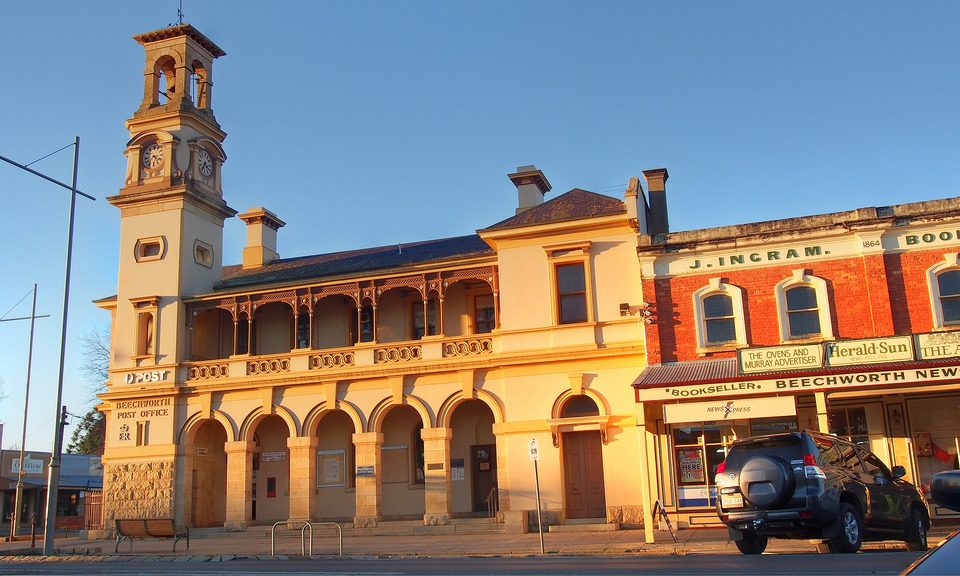Fast and CHEAP Broadband For All?
Jobs WA
May 15, 2007Journalism in Oz & the ‘Public Right To Know’
May 17, 2007While the debate on broadband mostly centers on speed and reach of fast broadband applications, the real nub of the debate is price. Not price of cable roll-out but end price to the consumer. If we end up with unaffordable broadband there’s no use having it.
That’s what Managing Director of Australian Telecommunications Users Group (ATUG), Rosemary Sinclair argued in her round up the issues behind both the Government and Opposition’s competing broadband policies at the Connecting Up Non Profit Technology Conference last Monday.
Neither the government nor the opposition’s broadband policies seem perfect, instead they merely look like a good place to start the public debate.
To further the debate beyond the interests of the big businesses who stand to make a lot of money over broadband, Rosemary says it’s helpful to point to the different supply models adopted by other countries to achieve broadband that is faster and cheaper than ours.
- Japan and Korea have broadband highly subsidised by government. Their fibre networks are much larger than ours.
- In Iceland broadband is fed through the electricity grid by their electricity companies (originally done so the companies could, through the electricity and broadband being connected, negate their meter reading costs) and then given away to consumers or made available for larger broadband providers.
- Canada’s public private partnership on broadband is similiar to the ALP’s proposal but Canada’s model encourages open access to fibre cables in regional areas.
The whole structure of the market is changing. But the big old carriers ‘don’t get it’.
Voice phone calls, especially fixed land line phone rentals have traditionally been the Telcos’ favorite cash cow but Australians have taken on less profitable mobile phones in a big way.
Also VoIP (internet phones) is catching on, which means even less money for the Telcos.
The network is changing in its nature and the customer or consumer is becoming much more powerful in terms of the applications and services.
Broadband is making a huge difference to the market. It’s not the users who want more speed on their broadband; it’s the new applications being released every day that need more broadband speed.
Rosemary stressed that 3G or NextG is not in the play. Sure, broader coverage but not the sort of speeds you would get from fixed line broadband. It’s slower and right now the prices for these in Australia are woeful.
And DSL (Digital Subscriber Line eg Big Pond, Optus copper cable) gets slower the further you get from the phone exchange, so we have no choice but to plan our way into a fibre future.
But can we pay for fibre and keep it affordable?
- Telstra with their massive business expenses argue their fibre rollout will cost consumers $85-90 month for broadband.
- The G9 – Optus and eight other Tesltra competitors – think they can do it for $45 a month and smaller. 3rd wave locals can provide Fibre-to-the-Home (FTTH) in their areas (Albury and Whittlesea are recent local examples) can do it for even less.
Albury’s FTTH problems/opportunities through economic development eyes
- Carriers see FTTH as costly/lacking sufficient return on investment which means the service will only be supplied to major cities/centres, which in turn means government subsidies are necessary.
- Carriers prefer to own and have exclusive use of the infrastructure, regardless of subsidy.
- The economic development perspective merely requires the infrastructure be provided.
- State and Community Industry Partnering Solutions (SCIPS) make it possible for communities – no matter how large or small – to aspire to FTTH and all of the social, cultural, educational, health, entertainment and recreational benefits that currently are only available in the largest populations centres.
Who is ATUG?
ATUG is an independent, self-funded organisation which has been representing the interests of users (mostly business) of telecommunications to regulators, governments and industry since 1981.



3 Comments
Alan Kohler had a great column in The Age on Wednesday. The fibre-to-the-node supply method seems to be designed to protect Telstra’s main asset: the copper phone lines.
It IS a good article Andrew. As Rosemary Sinclair said at the CU07 Conference – there needs to be a good PUBLIC discussion NOT one ‘behind closed doors’.
Hi There
The business ‘men’are going to protect their pockets as long as they can. Why would they deliver an affordable service to everyday people who struggle to make a living when they can have their pockets lined.
I am a mature age student and am almost expected to have access to broadband. A lot of resources, lecture notes, video’s to analyse for assignments and more – which require broadband speed to download. Unfortunately I know some people this effects as they cannot afford the current broadband prices. For me, it means scacrificing something else in order to have it.
Is education free? I say NO! I have to scrimp, save, work and be stressed with having to work and study just to pay bills such as this – and then for what – a good education with a $20,000+ bill to pay off at the end of it. But I will say this, after living in a 3rd World country – I somehow still feel privileged at the opportunity I have.